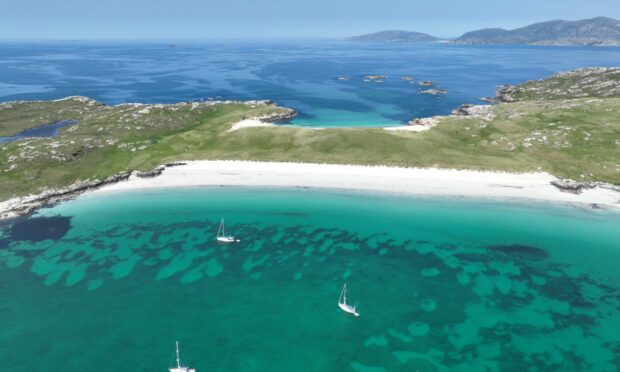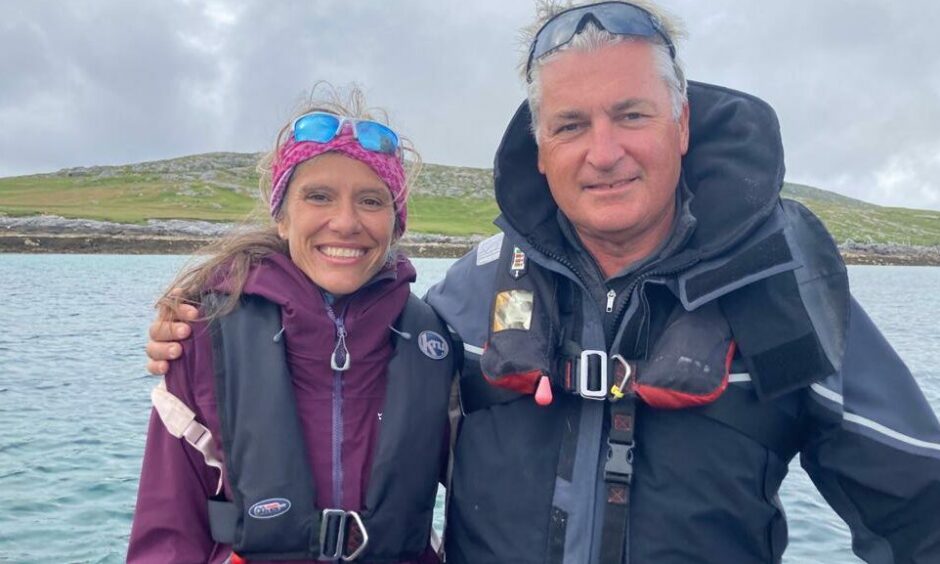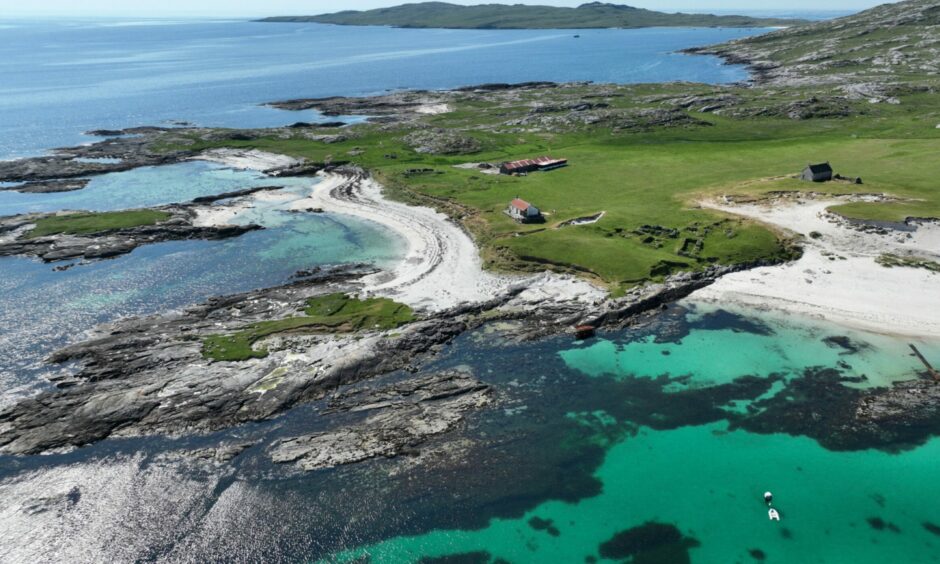The owners of the Castaway island of Taransay are seeking a new partner to help fund their long-term nature restoration vision.
Adam and Cathra Kelliher have been carrying out environmental, historical and social projects on the uninhabited island since buying it in 2011.
But now they need fresh investment to continue the project while remaining control of the land.
The couple stress they are not selling Taransay, or giving up equity in any new partnership.
Pooling resources to help regeneration
They say the island presents an ideal opportunity for a model combination of land ownership and third-party involvement, pooling resources to achieve regeneration goals.
But they are aware the move, believed to be the first of its kind in Scotland, could add to the ‘green laird’ debate where large companies invest in land for carbon off-setting.
The Kellihers bought the island amid strong competition, including, reportedly, from Ben Fogle, one of the volunteers who appeared in the Castaway TV series.
At the time the island had just one standing tree, an aspen, growing out of an inaccessible cliff.
Centuries of intensive grazing had created a monoculture and all flora and fauna had been eaten to the roots.
The couple, who own Borve Lodge Estate, then worked with experts on ecology, wildlife and the planting of native trees.
The aim is that by 2032 they will have established woodlands, community tree planting and restored peatlands.
Redeveloped blackhouses, once used by residents, the last of whom left the island in 1974, will also be part of historical and archaeological interpretation.
Last year the first paying customers were taken by boat from Harris on eco-tourism trips to study the island’s geology and history.
Potential for renewables projects
It is envisaged the new partner, or partners, will help to develop tourism, tree planting, deer management and peatland restoration.
There is also the possibility of building new wind or hydro power projects on the island.
Cathra Kelliher said: “It’s such a big project and we’re not managing to get it done as quickly as we want to. And everything costs money.
“So we’re attempting something that’s not been done before, to seek a partner to come on board without us giving up any equity.”
She said she is aware that ‘greenwashing’ is a hugely controversial issue in Scotland.
“But is there a way that we can turn that to our advantage? We’re just putting it out there to see what happens.
“Could this be a model for landowners, including community landowners, to harness the money that’s out there while not ceding ownership of the land itself?
“For us it’s trying to find a way of doing things a bit differently.
“Taransay needs investment, not piecemeal investment which is how we’ve been able to do it so far.
“We want to regenerate the whole island, including its social history, working as we go along with the community.”
The couple are working with Savills to offer the “once in a lifetime” opportunity.
Cathra added: “It is such a good project that needs to be done, but the scale in which it should be done is something we cannot afford right now.
We don’t want to sell the island
“If we put Taransay on market tomorrow we’d get a fortune for it, but we don’t want to do that.
“We understand that no one may come forward and want to do this. Maybe they will want to own the island.
“But we’re told there is a lot of interest in partnerships and we have the local knowledge.”
Adam said Taransay’s vastness and raw beauty touches everyone who visits.
“Being an island in the north Atlantic 1.6 miles offshore, it presents a unique opportunity to carry forward the project in splendid isolation, unaffected by neighbouring land or other concerns.”
Lucy Stanfield-Jenner, Savills head of natural capital in Scotland, said: “This opportunity would suit a visionary partner who is passionate about supporting the Kellihers towards creating a genuinely unique nature restoration project on Britain’s largest uninhabited island, whilst ensuring social inclusion and celebrating the island’s geological, archaeological, historical and cultural heritage.”


